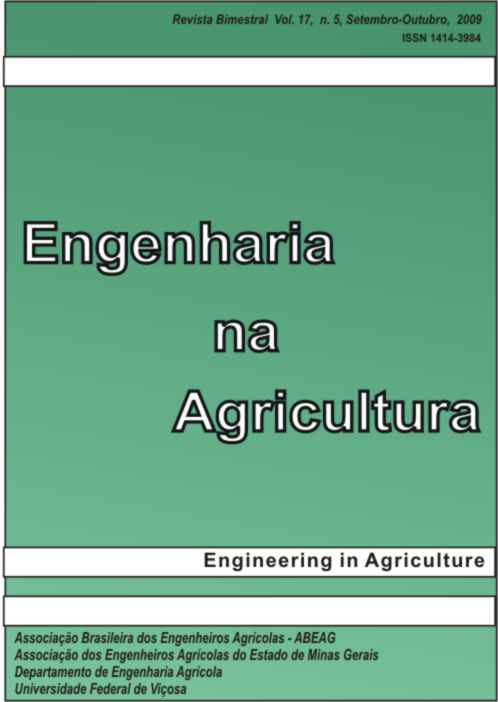EVALUATION OF METHODOLOGIES OF REGIONALIZATION OF MINIMUM STREAM FLOWS OF REFERENCE FOR THE SÃO FRANCISCO RIVER WATERSHED
DOI:
https://doi.org/10.13083/reveng.v17i5.166Keywords:
Regionalização de vazões, vazões mínimas de referência, outorgaAbstract
In the present study, was made the evaluation of three methodologies of regionalization of minimum stream flows of reference (Q7,10, Q90 and Q95) applied in São Francisco river watershed, upstream of the Três Marias reservoir, to know: a) Eletrobrás (1985), based on regional equations of regression; b) Chaves et al. (2002), that applies automatic interpolation and extrapolation techniques; e c) specific stream flow. The minimum stream flows of reference esteemed by the three methodologies were compared with those observed in each one of the 28 used fluviometric stations in the study. The method that presented greater precision was the proposed by Eletrobrás (1985), resulting in three equations of flow regionalization, with average relative error of 26,8%. Amongst the used physical and climatic characteristics in the regionalization, the draining area was the one that better explained the behavior of the minimum stream flows. The other methodologies didn’t present satisfactory results when the difference in the drainage area of the place of known flow and the place where the stream flow have been estimated, was large.Downloads
Downloads
How to Cite
Issue
Section
License
Authors who publish with this journal agree to the following terms:
The author(s) authorize(s) the publication of the text in the journal;
The author(s) ensure(s) that the contribution is original and unpublished and that it is not in the process of evaluation by another journal;
The journal is not responsible for the views, ideas and concepts presented in articles, and these are the sole responsibility of the author(s);
The publishers reserve the right to make textual adjustments and adapt texts to meet with publication standards.
From submission, the author is fully conceding the paper's patrimonial rights to the publication, but retaining the owner of its moral rights (authorship and paper's identification) according to Creative Commons Attribution-Noncommercial.








 Licensed by
Licensed by 